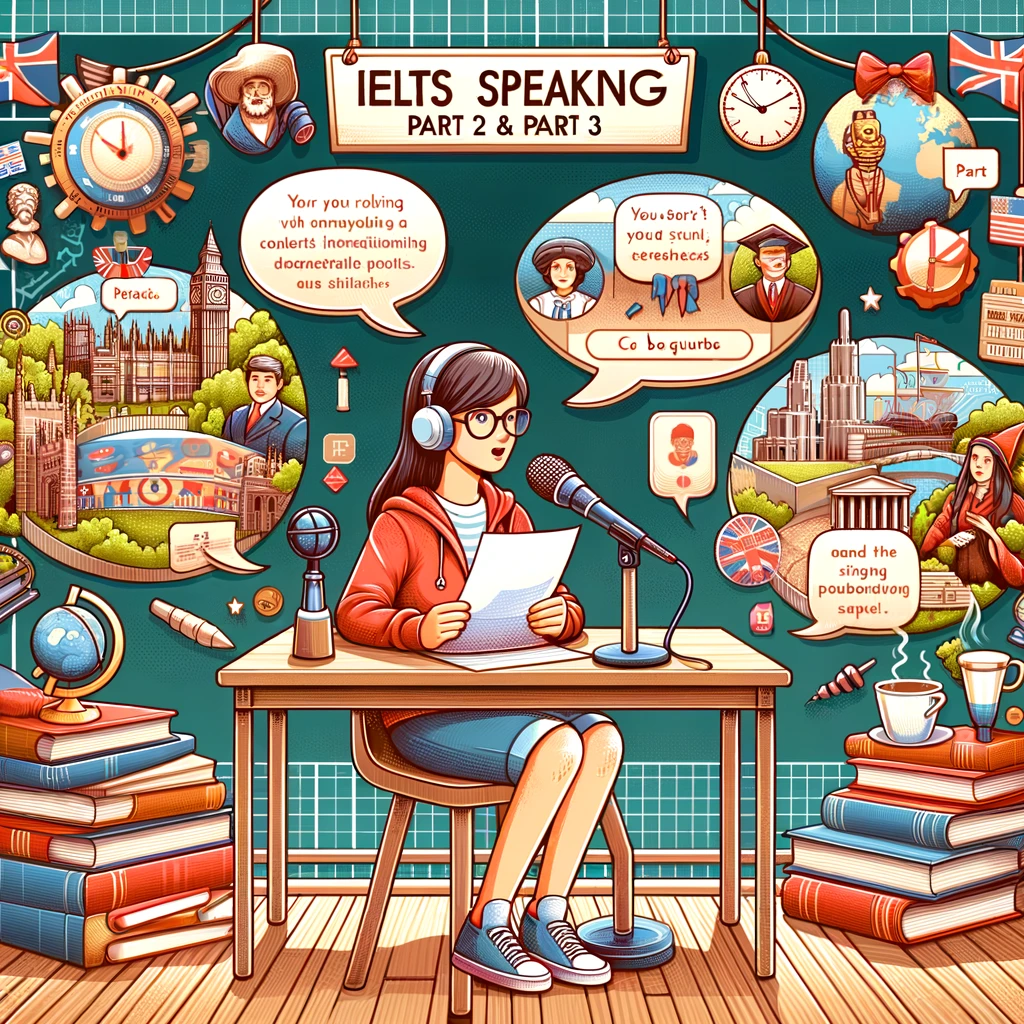Part 2
Describe a place in your city that you like to visit.
One place in my city that I love to visit is the Nakhchivan City Park, a beautiful green space located in the heart of the city. The park is a vibrant oasis, offering a serene escape from the bustling urban environment.
When I visit the park, I enjoy taking long walks along the winding paths that meander through the lush greenery. There are various sections within the park, including a rose garden, a small lake with paddle boats, and several playgrounds for children. I often spend time reading a book on one of the many benches, or simply sit and enjoy the tranquility. Occasionally, I join the early morning group exercises or participate in the evening cultural events that the park frequently hosts.
I like to visit the Nakhchivan City Park because it provides a perfect blend of relaxation and recreation. The fresh air and natural beauty rejuvenate me, while the activities and events offer entertainment and opportunities to socialize. The park is well-maintained and safe, making it an ideal spot for a peaceful retreat.
I go to the park at least once a week, usually on weekends. It’s my go-to place to unwind after a busy week and to catch up with friends in a relaxed setting. During the spring and summer months, I tend to visit more frequently, as the vibrant flora and pleasant weather make it even more inviting.
The Nakhchivan City Park is special to me because it holds many cherished memories. It’s where I’ve celebrated numerous personal milestones, had meaningful conversations with friends, and found solace during challenging times. The sense of community and the connection to nature that the park provides make it a truly unique and valuable part of my life.
Part 3
1. Why do people like to visit certain places in their city?
People like to visit certain places in their city for various reasons, such as relaxation, recreation, socialization, and cultural experiences. These places often provide a sense of escape from daily routines, offering opportunities to connect with nature, enjoy leisure activities, or engage in community events. Familiarity, convenience, and the presence of amenities also play significant roles in attracting visitors.
2. How can cities improve public spaces for their residents?
Cities can improve public spaces by ensuring they are clean, safe, and accessible to all residents. This includes maintaining green areas, providing adequate seating, lighting, and facilities such as restrooms and drinking fountains. Incorporating diverse recreational options, such as playgrounds, sports facilities, and cultural venues, can cater to different interests and age groups. Additionally, involving the community in the planning and upkeep of these spaces can foster a sense of ownership and pride.
3. What are the benefits of having accessible public places in a city?
Accessible public places offer numerous benefits, including promoting physical activity, improving mental health, and enhancing social cohesion. They provide spaces for relaxation and recreation, contributing to a higher quality of life. Public places also serve as venues for community events and cultural activities, fostering a sense of belonging and community spirit. Moreover, they can enhance the aesthetic appeal of a city, attracting visitors and boosting local economies.
4. How does urban planning affect the quality of life in a city?
Urban planning plays a crucial role in determining the quality of life in a city. Thoughtful planning ensures efficient land use, adequate infrastructure, and the availability of essential services. It can create well-connected, vibrant neighborhoods with accessible public transportation, green spaces, and recreational facilities. Good urban planning also addresses environmental sustainability, reducing pollution and promoting healthier living conditions. Conversely, poor planning can lead to congestion, inadequate services, and a lack of community spaces, negatively impacting residents’ well-being.
5. What role do parks and recreational areas play in urban life?
Parks and recreational areas are vital components of urban life. They provide residents with spaces to engage in physical activities, relax, and enjoy nature. These areas contribute to the physical and mental well-being of individuals by offering opportunities for exercise, leisure, and social interaction. Parks also serve as community hubs, hosting events and activities that bring people together. Additionally, they help improve air quality, reduce urban heat islands, and support biodiversity, enhancing the overall environmental health of cities.
6. How can cities balance development with the preservation of natural and historical sites?
Cities can balance development with the preservation of natural and historical sites by implementing comprehensive planning strategies that integrate conservation goals. This includes designating protected areas, enforcing zoning regulations, and promoting sustainable development practices. Cities can also incentivize the preservation of historic buildings and natural landscapes through grants, tax benefits, and public-private partnerships. Engaging the community and stakeholders in the planning process ensures that development projects respect and reflect the city’s heritage and environmental values.
